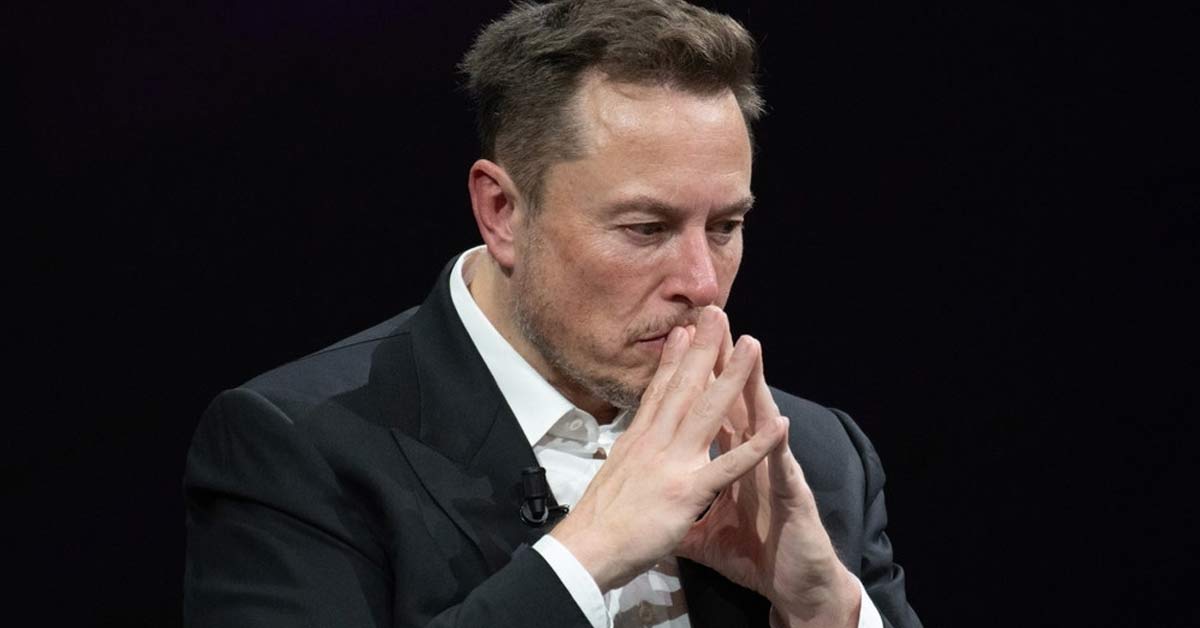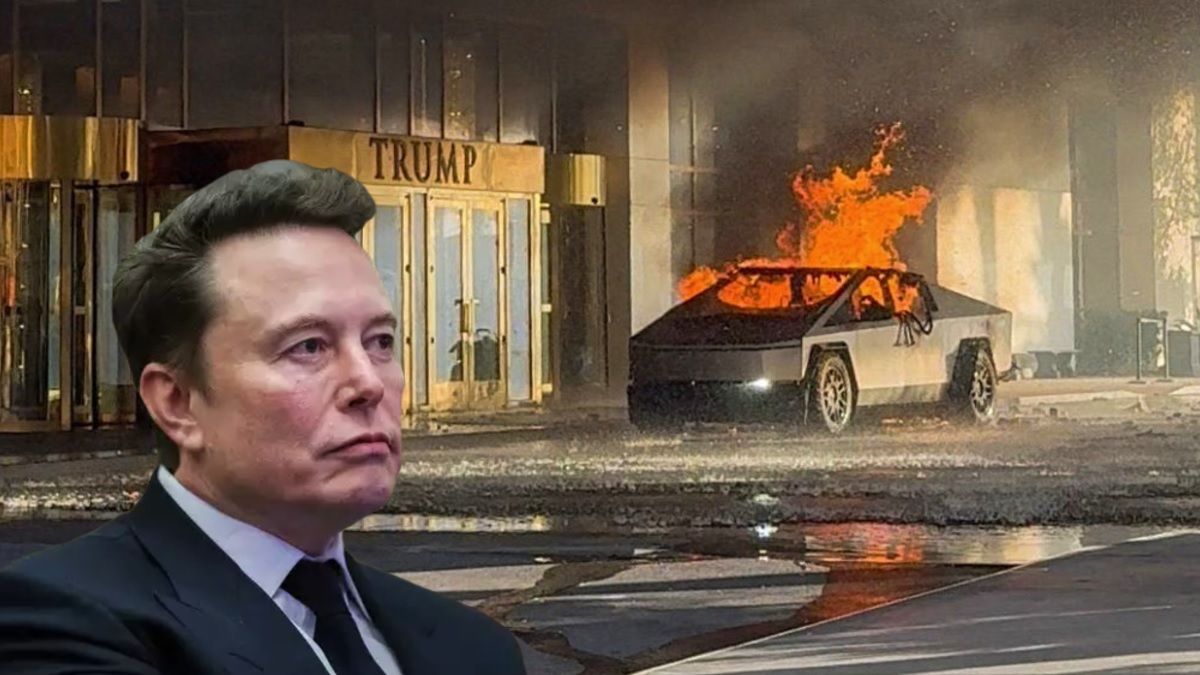A Texas family is raising the alarm after a loved one lost his life inside a Tesla Cybertruck—trapped by jammed doors after a crash cut the vehicle’s electric power. The tragedy has ignited a firestorm of criticism and cast a harsh spotlight on Tesla’s futuristic truck, as well as CEO Elon Musk’s controversial response.
What began as a horrific accident on a quiet Texas highway has become a public relations nightmare for Tesla. According to witnesses and court filings, the victim, whose identity remains withheld for privacy, screamed for help as flames engulfed the vehicle—but the doors wouldn’t open. The Cybertruck’s signature electronic door system had failed, leaving the man with no way out.
In a move that stunned both supporters and critics, Elon Musk personally reached out to the grieving family, offering to pay for funeral expenses and set up a trust fund for the victim’s children. While some called this an act of compassion, the family insists it’s a calculated attempt to “silence the story” before it threatens Tesla’s brand.
“They think money can quiet our pain. But it won’t bring him back,” the victim’s sister said in an emotional statement. “He burned alive in that truck. That’s not an accident—that’s a design flaw.”
A $1 Million Lawsuit and a Demand for Accountability
The family has filed a $1 million lawsuit against Tesla, alleging the Cybertruck is “dangerously and defectively designed.” At the heart of their complaint: the absence of a mechanical override to open the doors in the event of electrical failure. The lawsuit also points to Tesla’s lack of clear safety instructions for occupants trapped after a crash—a chilling accusation now echoed by EV owners and former Tesla employees alike.
“Tesla marketed the Cybertruck as the future,” said safety advocate Jerome Fuller. “But what kind of future is it if people are burning alive because there’s no mechanical way out?”
Filed just days after the fatal incident, the lawsuit outlines damning allegations: the Cybertruck’s doors rely entirely on electric mechanisms, and when those systems fail—such as during a crash—occupants are effectively locked inside. The suit cites multiple prior cases where Cybertruck drivers or passengers struggled to exit after system failures. While those incidents ended without fatalities, they appear to form a troubling pattern.
The family’s legal team is calling for an immediate federal investigation, and several senators are reportedly drafting inquiries to the National Highway Traffic Safety Administration (NHTSA).

A Pattern of Problems—or a Breaking Point?
Tesla has faced criticism over its safety protocols before. But this case has struck a deeper nerve, as the Cybertruck was boldly positioned as “indestructible” and “cutting-edge.” With its futuristic design, the Cybertruck has drawn fascination and skepticism since its debut. Now, as it hits American roads, safety has become a central concern.
Some owners have already taken matters into their own hands—installing manual release latches or keeping window-break tools inside the cabin. Tesla’s official documentation, critics argue, offers only vague references to “emergency escape,” which many say is nowhere near sufficient.
“There should have been a clear, accessible, manual fail-safe,” said vehicle safety engineer Carla Reynolds. “This isn’t about luxury. This is about life and death.”
Elon Musk’s Gesture: Sympathy or Strategy?
At the center of the storm is Musk himself. His decision to cover funeral costs and offer long-term support was initially seen as an unusual display of empathy. But online backlash soon followed.
“This isn’t charity—it’s hush money,” read one viral post, shared over two million times. Others noted that Musk’s legal team made no mention of revisiting the Cybertruck’s design—only that they were “committed to standing with the family during this tragic time.”
To the victim’s family, the silence on accountability speaks volumes.
What Did Tesla Know—And When?
Perhaps most chilling is the lawsuit’s suggestion that Tesla was aware of the door failure issue long before the crash. Internal documents, the family claims, show engineers raised concerns about door reliability during power outages—but no meaningful changes were ever made.
A former Tesla employee, speaking anonymously, recalled: “Everyone in the room knew the doors wouldn’t open without power. We were told not to talk about it.”
If proven true, the allegation could open the door to not just civil penalties, but possible criminal charges.

A Surge of Public Outrage
Public anger has surged in the wake of the tragedy. Protesters have gathered outside Tesla showrooms in Houston and Dallas, holding signs reading “How do you escape the future?” and “Let us out, Elon.” Online forums dedicated to Tesla vehicles have erupted with debate. Some longtime supporters say they feel betrayed; others are calling for immediate recalls. A petition demanding Tesla issue a hardware retrofit for all Cybertrucks reached 500,000 signatures within 48 hours.
Auto safety experts warn this incident could spark deeper investigations—not just into Tesla, but the entire electric vehicle industry’s reliance on electronic systems without adequate mechanical backup.
A Legacy on the Line
For Elon Musk, who has long positioned himself as a revolutionary innovator reshaping transportation, the stakes are now personal. The Cybertruck was meant to be Tesla’s crown jewel—bold, indestructible, and smarter than any truck on the road. Instead, it may become a symbol of hubris, of corners cut, and of danger hidden beneath stainless steel.
“People want to believe in Tesla,” said media analyst Dana Beech. “But when someone dies in your product, trapped like that, and your first move is to write a check rather than recall the model—what message does that send?”
As the victim’s funeral approaches and the lawsuit heads to court, one thing is clear: this isn’t just about one vehicle. It’s about accountability. And no amount of futuristic design can cover the scars left by silence, denial, and delay.





